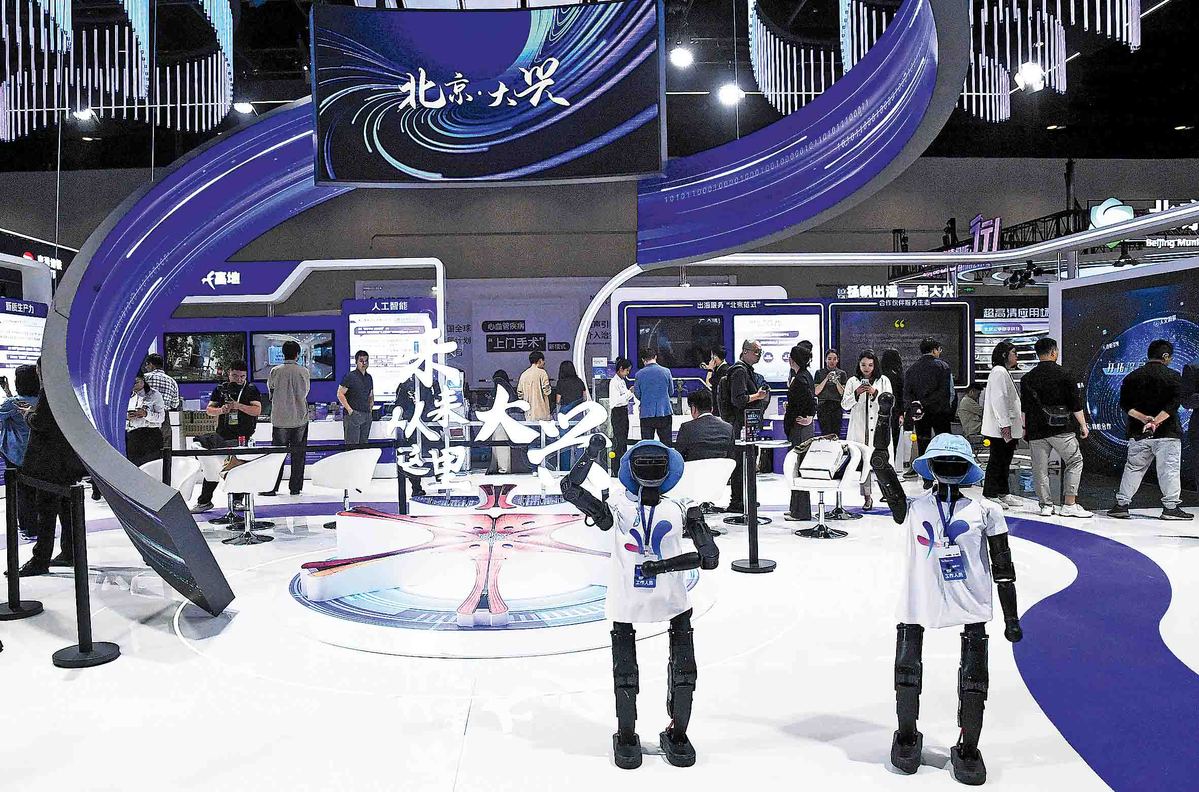'Made in China' on cusp of high-tech makeover
Manufacturing sector undergoing shift from scale-driven expansion to value-oriented transformation


According to the Global Innovation Index released by the World Intellectual Property Organization, China climbed to 11th globally in 2024 — remaining the top performer among middle-income economies.
The impact of design innovation is also extending beyond consumer markets into high-end equipment and industrial systems. At the China International Supply Chain Expo held last month in Beijing, a new wave of smart products ranging from humanoid robots to bionic hands showcased the deepening role of industrial design in advanced manufacturing.
Industrial design has been integrated into the entire manufacturing value chain through product design, process innovation and business model development, said Guan Bing, director of an industrial economics institute at the China Center for Information Industry Development.
"The more sophisticated and advanced the design is, the higher the demands it places on digitalization and intelligent manufacturing — in turn driving the upgrade of the entire production chain," Wu said.
In the electric vehicle field, carmaker Xiaomi has merged aesthetics and automation in its latest product line, with its YU7 model's clamshell-style hood and customizable color features reflecting new consumer preferences.
Behind the scenes, the company's factory operates with over 700 robots, while one-piece die-casting technology has cut component counts from 72 to 1 — reducing production time by 74 percent.
Buoyed by China's rapid advancements in advanced technologies such as artificial intelligence, industrial design itself is undergoing a rapid transformation. At automotive design firm IAT, engineers now generate styling concepts via voice prompts and AI tools — accelerating design cycles by 50 percent.
An industry report showed that the value of China's AI industry exceeded 700 billion yuan in 2024, with annual growth above 20 percent for consecutive years. Homegrown AI products are increasingly integrated into sectors like industrial design, education and content creation, driving a multisector smart application ecosystem.
As a new wave of technological revolution and industrial transformation is accelerating, deep integration of AI-assisted industrial design and manufacturing will unlock greater possibilities for intelligent manufacturing, Guan added.
However, gaps remain. The rapid growth of its manufacturing sector, China's innovation capabilities still lag behind, held back by a mismatch between industrial expansion and the slower pace of talent development and education reform. Limited awareness and investment in design, along with a short-term profit-driven mindset among some enterprises, have further compounded the challenges.
"To foster design innovation, it is crucial to build incentive mechanisms and strengthen IP protection," said Ke Bin, a researcher at an industry center under the Ministry of Industry and Information Technology.
Ke called for a value assessment system to encourage greater investment in design by enterprises, and more cross-disciplinary training programs aligned with the needs of intelligent manufacturing.
According to a recent McKinsey report, China's continued policy drive for intelligent manufacturing and industrial automation, coupled with breakthroughs in innovative technologies such as industrial internet platforms and large models, is expected to propel its automation industry to account for over one-third of the global market by 2025, with further "leapfrog growth" projected over the next five years.
Xinhua




































